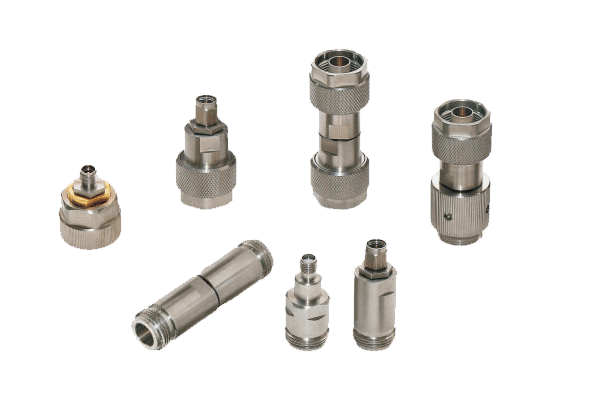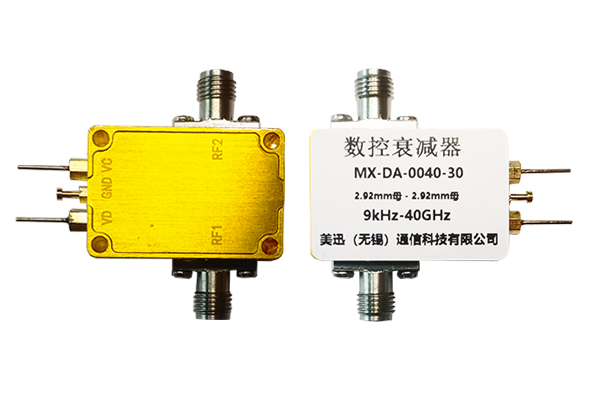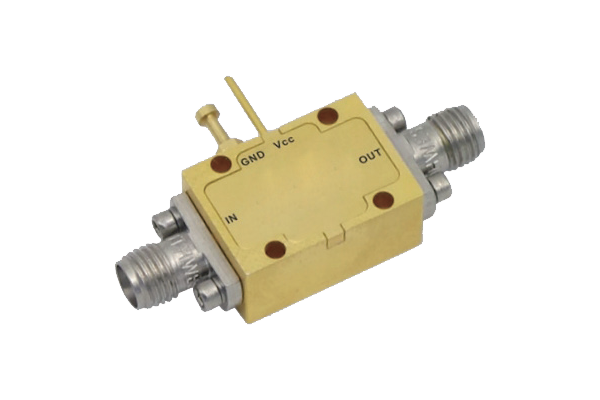
Pin diodes now serve as significant elements in high-bandwidth applications owing to their fundamental material and electrical qualities Their rapid transition between on and off states together with minimal capacitance and low insertion loss suits them for switching modulation and attenuation roles. The main mechanism of PIN diode switching uses bias voltages to regulate copyright flow through the device. The applied voltage modifies the depletion layer thickness at the p–n interface thus affecting conductivity. Modifying the applied bias permits PIN diodes to function at high frequencies with minimal signal distortion
When precise timing and control are needed PIN diodes are frequently embedded within advanced circuit configurations They may be applied in RF filtering arrangements to selectively pass or reject particular frequency bands. Their capability to tolerate high-power signals allows deployment in amplifiers power dividers and generator equipment. The development of compact efficient PIN diodes has increased their deployment in wireless communication and radar systems
Study of Coaxial Switch Performance
Coaxial switch development is multifaceted and calls for precise management of several parameters Switch performance is contingent on the kind of switch operational frequency and its insertion loss attributes. Effective coaxial switch layouts strive to lower insertion loss and improve port-to-port isolation
Performance studies concentrate on return loss insertion loss and isolation measurements. Measurements rely on simulation, theoretical models and experimental test setups. Accurate analysis is crucial to ensure reliable coaxial switch operation across systems
- Simulation packages analytic approaches and lab experiments are commonly applied to analyze coaxial switch designs
- Switch performance may be significantly affected by thermal conditions impedance mismatches and production tolerances
- Emerging developments and novel techniques in switch design concentrate on boosting performance while minimizing footprint and energy use
Low Noise Amplifier LNA Design Optimization
Achieving high LNA performance efficiency and gain is critical for exceptional signal fidelity in many use cases It requires selecting suitable transistors setting optimal bias conditions and choosing the right topology. Effective LNA designs minimize internal noise and maximize clean signal gain with little distortion. Analytical and simulation tools are vital for studying how design variations affect noise. Striving for a minimal Noise Figure assesses success in retaining signal power while limiting noise contribution
- Choosing transistors with inherently low noise characteristics is critically important
- Establishing proper bias conditions with optimal settings minimizes noise within transistors
- Circuit topology choices are decisive for the resulting noise performance
Approaches such as matching networks noise suppression and feedback loops help improve LNA behavior
Signal Switching Using Pin Diodes

PIN diode based routing offers versatile efficient control of RF signal paths These semiconductors can be rapidly switched on or off allowing dynamic path control. Key benefits include minimal insertion loss and strong isolation to limit signal deterioration during switching. They are commonly used in antenna selection duplexers and phased array RF antennas
A control voltage governs resistance levels and thereby enables switching of RF paths. In its open state the diode’s resistance is high enough to stop signal flow. Introducing a positive control voltage reduces resistance and opens the RF path
- Moreover furthermore additionally PIN diode switches provide quick switching low energy use and small form factors
Multiple architectures designs and configurations of PIN diode switch networks can be constructed to deliver advanced routing functions. Through interconnection of switches one can construct dynamic matrices for adjustable signal path routing
Performance Efficacy Assessment of Coaxial Microwave Switches

Rigorous evaluation and testing of coaxial microwave switches are key to confirming dependable operation in electronics. A range of factors like insertion reflection transmission loss isolation switching rate and bandwidth affect switch performance. Detailed evaluation requires measuring these parameters across a range of operating and environmental test conditions
- Additionally the evaluation should incorporate reliability robustness durability and capacity to handle severe environmental conditions
- Ultimately the conclusions of a detailed evaluation deliver important valuable critical intelligence for choosing designing and refining switches for specific tasks
LNA Noise Minimization Techniques A Detailed Review
LNA circuits are key elements in RF and wireless systems, amplifying faint signals while minimizing noise additions. This survey offers an extensive examination analysis and overview of approaches to minimize LNA noise. We examine investigate and discuss the fundamental noise sources including thermal shot and flicker noise. We also examine noise matching feedback circuitry and optimal biasing strategies to mitigate noise contributions. The review emphasizes recent innovations including novel materials and architecture approaches that decrease noise figures. By elucidating noise reduction principles and applied practices the article aims to be a valuable resource for engineers and researchers building high performance RF systems
PIN Diode Uses in Rapid Switching Systems

PIN diodes possess remarkable unique and exceptional traits that fit them well for high speed switching systems Small capacitance together with low resistance enables rapid switching to satisfy precise timing needs. PIN diodes’ adaptive linear voltage response permits precise amplitude modulation and switching. Such versatility flexibility and adaptability renders them appropriate suitable and applicable for diverse high speed scenarios Use cases cover optical communications microwave circuitry and signal processing devices and equipment
Coaxial Switch Integration and IC Switching Technology
Integrated coaxial switch circuits offer advancement in signal routing processing and handling across electronic systems circuits and devices. These integrated circuits are tailored to control manage and route signals via coaxial connections with high frequency performance and low insertion latency. Integrated circuit miniaturization creates compact efficient reliable and robust designs favorable for dense interfacing integration and connectivity use cases
- By meticulously carefully and rigorously adopting these practices designers can deliver LNAs with excellent noise performance supporting reliable sensitive systems Through careful meticulous and rigorous application of such methods engineers can design LNAs with top tier noise performance enabling dependable sensitive systems With careful meticulous and rigorous execution of these strategies designers can obtain LNAs exhibiting excellent noise performance for sensitive reliable systems By carefully meticulously and rigorously applying these approaches designers can realize LNAs with outstanding noise performance enabling sensitive coaxial switch reliable electronic systems
- Deployment areas span telecommunications data communications and wireless networking environments
- Coaxial switch IC implementations support aerospace defense and industrial automation applications
- Application examples include consumer electronics audio video products and test measurement systems
Considerations for LNA Design at Millimeter Wave Frequencies

Millimeter wave LNA design must address elevated signal attenuation and stronger effects of intrinsic noise. At millimeter wave ranges parasitics dominate so meticulous layout and selection of components is essential. Controlling input match and achieving high power gain are critical essential and important requirements in mmWave LNA design. Choice of active devices such as HEMTs GaAs MESFETs or InP HBTs is crucial to reach low noise figures at mmWave. Additionally furthermore moreover careful design implementation and optimization of matching networks is vital for efficient power transfer and impedance matching. Attention to package parasitics is crucial as they have potential to harm mmWave LNA performance. Choosing low-loss interconnects and sound ground plane designs is essential necessary and important to minimize reflections and maintain high bandwidth
Characterization and Modeling of PIN Diodes for RF Switching
PIN diodes serve as important components elements and parts within a variety of RF switching applications. Accurate precise and detailed characterization of these devices is essential for designing developing and optimizing reliable high performance circuits. The work involves analyzing evaluating and examining electrical characteristics like voltage current resistance impedance and conductance. The characterization includes frequency response bandwidth tuning capabilities and switching speed latency or response time
Moreover additionally furthermore creating accurate models simulations and representations for PIN diodes is crucial essential and vital to forecast behavior in RF systems. Different numerous and various modeling strategies are available including lumped element distributed element and SPICE models. The selection of an apt model simulation or representation relies on particular application requirements and the expected required desired accuracy
Advanced Cutting Edge Sophisticated Techniques for Low Noise Quiet Minimal Noise Amplifier Design
Engineering LNAs demands careful topology and component decisions to achieve superior noise performance. Recent semiconductor breakthroughs and emerging technologies enable innovative groundbreaking sophisticated noise reduction design techniques.
Some of the techniques include using implementing and employing wideband matching networks selecting low noise transistors with high intrinsic gain and optimizing biasing schemes strategies or approaches. Additionally advanced packaging and thermal management practices are critical for minimizing external noise influences. By rigorously meticulously and carefully implementing these techniques practitioners can achieve LNAs with remarkable noise performance for sensitive reliable electronics
